The Powerful Rise of ASMR: Why It’s More Than Just a Trend
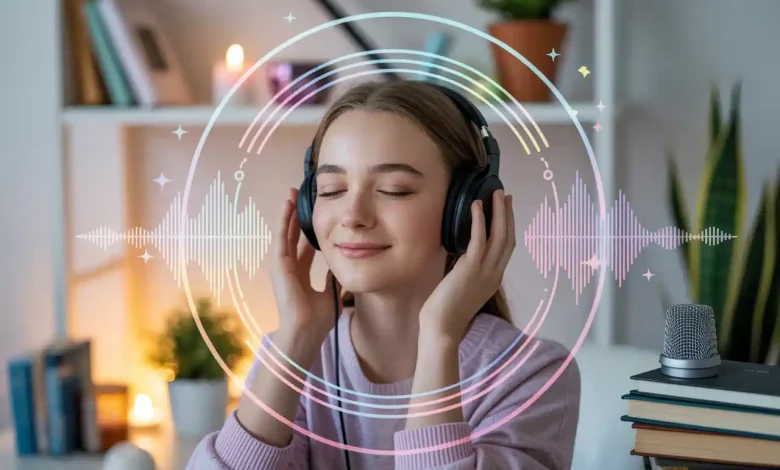
INTRODUCTION
ASMR (Autonomous Sensory Meridian Response) has rapidly grown from a little-known internet curiosity into a cultural and scientific phenomenon. In just over a decade, ASMR has gone from whispered videos shared by a handful of creators to a global movement with hundreds of millions of fans, countless online communities, and a thriving industry of content creators. What began as simple, homemade videos of people tapping on objects or softly speaking has evolved into a diverse and creative field that includes everything from high-production role-plays to live ASMR streams and even virtual reality experiences.
Today, ASMR is not just a passing internet fad. It is a powerful tool for relaxation, stress relief, and self-care. People of all ages and backgrounds turn to ASMR to help them cope with anxiety, insomnia, and the pressures of modern life. The ASMR experience is deeply personal, with each listener or viewer finding comfort in different sounds, visuals, or scenarios. For many, ASMR is a nightly ritual, a way to unwind and escape from the noise and stress of the outside world.
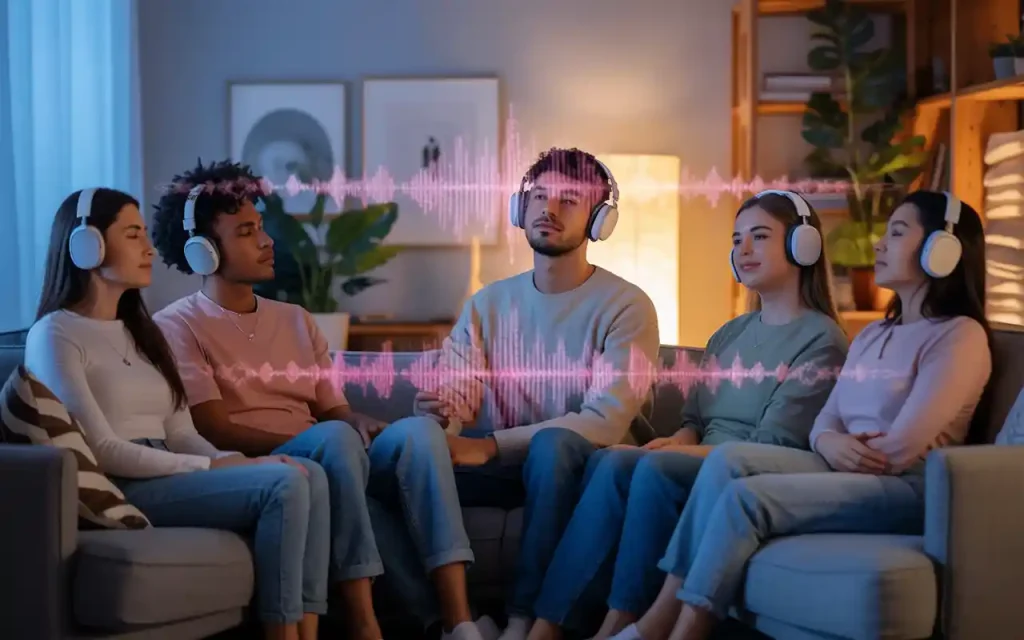
The science behind ASMR is still emerging, but early research suggests it can lower heart rate, reduce stress hormones, and even improve mood. The sensation itself—a tingling that often starts at the scalp and moves down the neck and spine—remains mysterious, but its effects are undeniable for those who experience it. ASMR has also sparked important conversations about mental health, digital intimacy, and the power of online communities to provide comfort and support.
In this detailed guide, you will discover how ASMR became a worldwide sensation, why it resonates so deeply with so many people, and how it continues to shape the way we think about relaxation, entertainment, and connection in the digital age. Whether you are new to ASMR or a longtime fan, understanding its rise and impact reveals why ASMR is much more than just a trend.
ASMR: What Is It?
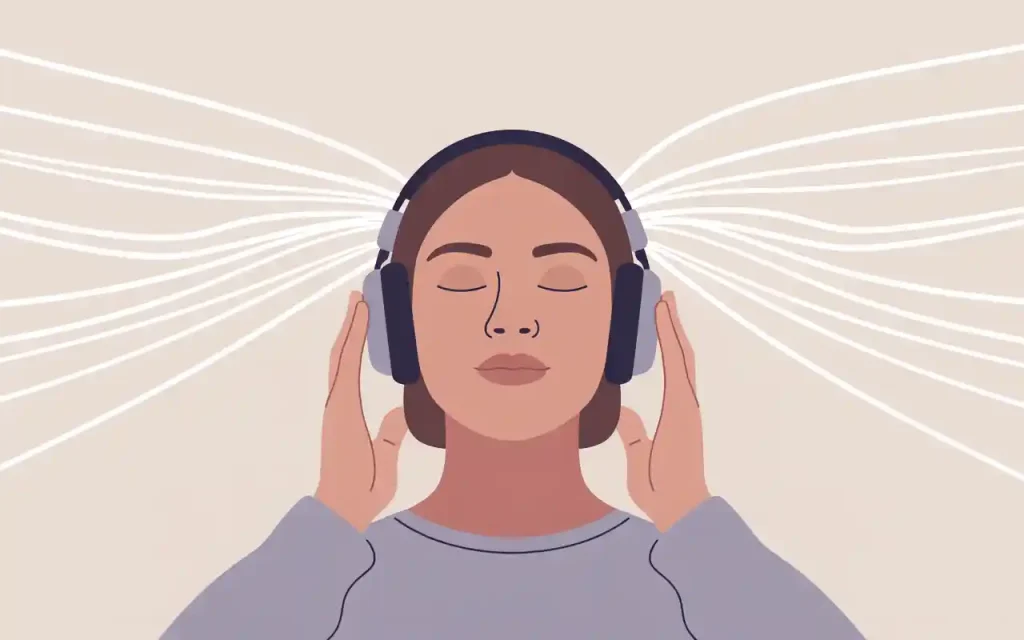
ASMR stands for Autonomous Sensory Meridian Response. It describes a tingling, calming sensation that usually starts on the scalp and moves down the neck and spine. This feeling is often triggered by specific sounds, visuals, or personal attention. People who experience ASMR report feeling deeply relaxed, sometimes even euphoric.
The Science Behind ASMR
- Brain Activity: ASMR activates brain regions linked to relaxation, social bonding, and emotional arousal. EEG and fMRI studies show increased alpha activity in the sensorimotor cortex, indicating a state of calm wakefulness and reduced motor activity.
- Physical Response: The tingling sensation is often compared to a gentle “brain massage.” It is a form of paresthesia, similar to the chills some people get from music (frisson).
- Emotional Impact: Many people feel comforted, cared for, and safe during ASMR experiences. The effect can last up to 45 minutes after a session, creating a lingering sense of relaxation.
Who Experiences ASMR?
Not everyone feels ASMR, but those who do often describe it as a unique and pleasant sensation. Some people are more sensitive to certain triggers, while others may not experience it at all. Research suggests a link between ASMR sensitivity and personality traits like neuroticism and anxiety.
History and Origins
- Early Descriptions: The sensation has been described anecdotally for decades, but the term “ASMR” was coined in 2010 by Jennifer Allen to provide a neutral, clinical name for the experience.
- Online Communities: The first major discussions began in 2007 on health forums, where people shared their experiences and searched for others who felt the same tingles.
- Cultural Roots: ASMR-like experiences can be traced back to ancient rituals, folklore, and spiritual practices worldwide, where sensory stimulation was used for healing and relaxation.
- Mainstream Growth: The genre exploded on YouTube and other platforms in the 2010s, with millions of videos and a rapidly growing global audience.
Why Is It So Popular?
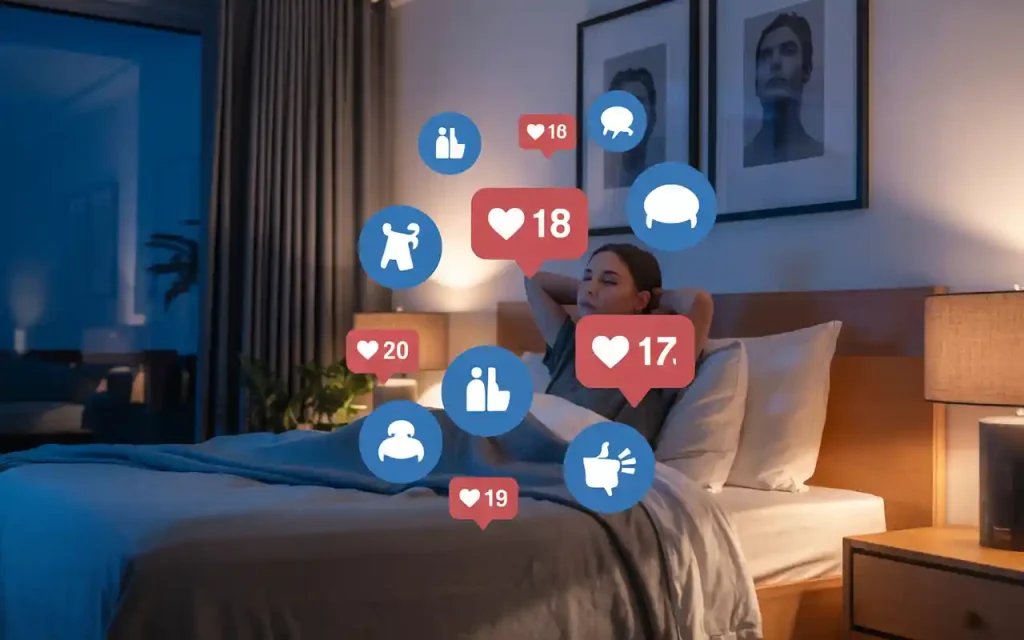
ASMR’s popularity is driven by its accessibility, effectiveness, and the sense of community it fosters.
- Stress Relief: ASMR helps people unwind after a long day, reducing anxiety and tension.
- Better Sleep: Many use ASMR to fall asleep faster and enjoy deeper, more restful sleep.
- Mood Enhancement: ASMR can boost mood, making people feel happier and more positive.
- Accessibility: ASMR content is free and easy to find online, making it available to anyone with internet access.
- Community: ASMR has created a global community where people share experiences and support each other.
The Growth of ASMR Online
| Year | YouTube ASMR Videos | TikTok ASMR Hashtags | Estimated Global Viewers |
|---|---|---|---|
| 2010 | Few hundred | Not available | Thousands |
| 2015 | 1 million+ | 10,000+ | Millions |
| 2020 | 13 million+ | 1 billion+ | 100 million+ |
| 2024 | 20 million+ | 5 billion+ | 200 million+ |
How Does It Work?
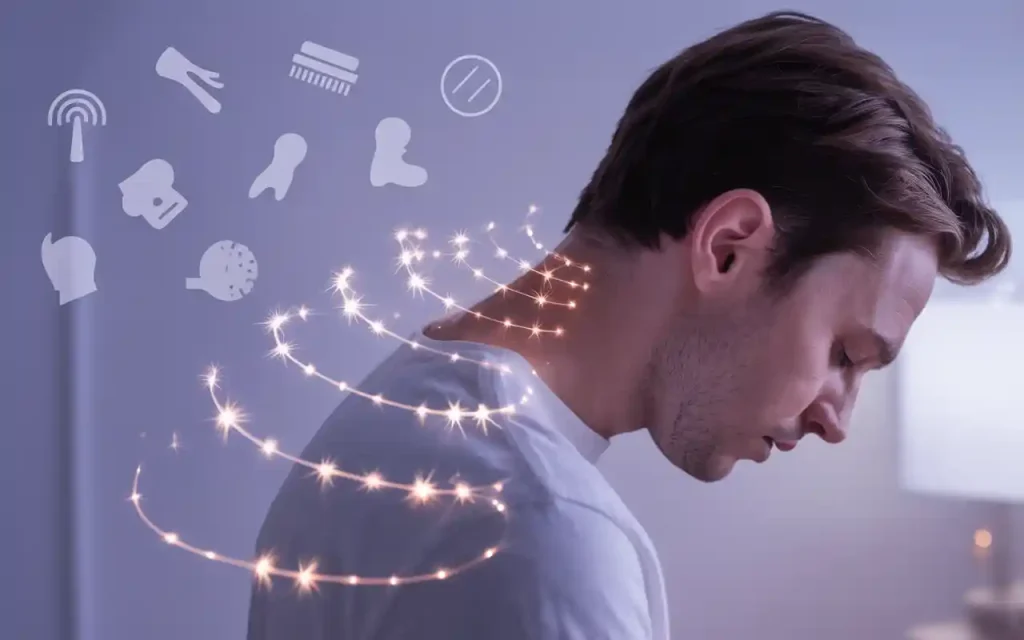
The Science of Triggers
ASMR triggers are specific sounds, visuals, or actions that cause the tingling sensation. Scientists believe these triggers activate the brain’s reward and relaxation centers.
- Whispering: Soft, slow speech is a classic ASMR trigger.
- Tapping: Gentle tapping on objects creates soothing rhythms.
- Crinkling: The sound of crinkling paper or plastic is relaxing for many.
- Personal Attention: Videos simulating haircuts, doctor visits, or makeup application make viewers feel cared for.
- Role Play: ASMRtists often act out scenarios that provide comfort and attention.
What Happens in the Brain?
- Release of Endorphins: ASMR may cause the brain to release endorphins, which are chemicals that make you feel good.
- Lowered Heart Rate: Research shows that ASMR can lower heart rate and promote calmness.
- Increased Connection: The feeling of personal attention in ASMR videos can create a sense of connection and trust.
Types of Triggers
There are countless ASMR triggers, and they can be grouped into several categories:
| Trigger Type | Description | Common Effects | Example Videos |
|---|---|---|---|
| Whispering | Soft, slow talking | Relaxation, tingling | Whispered reading, stories |
| Tapping | Gentle tapping on objects | Calm, focus | Tapping on glass, wood |
| Crinkling | Crumpling paper, plastic, or foil | Tingling, comfort | Crinkling wrappers |
| Personal Attention | Simulated care (haircut, doctor, makeup) | Safety, connection | Role-play sessions |
| Brushing | Brushing hair, microphones, or objects | Sleepiness, relaxation | Hair brushing, mic brushing |
| Eating Sounds | Chewing, sipping, crunching | Curiosity, tingling | Mukbang, eating ASMR |
| Page Turning | Flipping through books or magazines | Calm, focus | Reading sessions |
| Hand Movements | Slow, deliberate hand gestures | Visual tingles, calm | Hand movement videos |
| Scratching | Scratching surfaces like fabric or wood | Deep relaxation | Scratching mic, objects |
| Water Sounds | Pouring, dripping, splashing | Tranquility, sleepiness | Water pouring, rain sounds |
| Mouth Sounds | Kisses, lip-smacking, “sksk” sounds | Tingling, relaxation | Mouth sound videos |
| Typing/Writing | Keyboard or pen sounds | Focus, calm | Typing, writing sessions |
| Ambient Sounds | Rain, fire, wind, nature | Calm, sleepiness | Nature soundscapes |
More Than Just a Trend
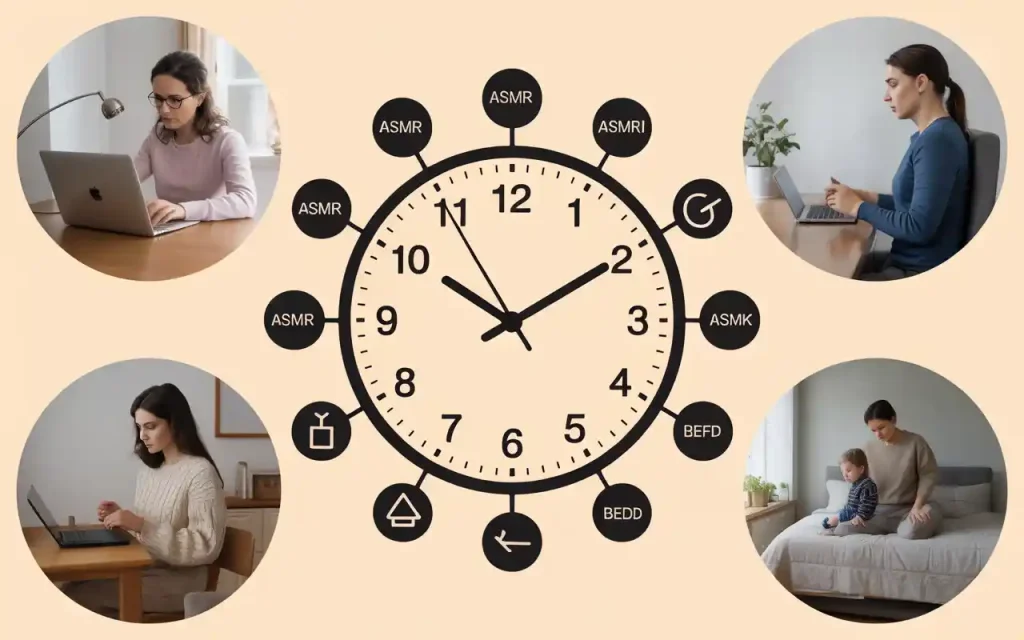
ASMR is not just a passing internet trend. It has become a vital part of many people’s daily routines and self-care practices.
Why ASMR Is Here to Stay
- Global Reach: ASMR content is available in many languages and cultures, with creators from all backgrounds.
- Diverse Creators: The ASMR community is inclusive, with both men and women producing content across a wide range of styles.
- Therapeutic Uses: Some therapists use ASMR techniques to help clients with anxiety, insomnia, and stress.
- Innovation: ASMRtists constantly create new triggers and formats, keeping the content fresh and engaging.
Benefits for Mental Health
ASMR offers several mental health benefits, supported by both personal stories and scientific research.
Key Benefits
- Reduces Stress and Anxiety: ASMR can help lower stress hormones and promote relaxation.
- Improves Mood: Many people report feeling happier and more positive after ASMR sessions.
- Helps with Sleep Problems: ASMR is widely used as a natural sleep aid.
- Creates a Sense of Connection: Personal attention triggers can make viewers feel cared for and less lonely.
- Boosts Focus: Some use ASMR to concentrate while studying or working.
- Pain Management: Early research suggests ASMR may help distract from chronic pain.
Mental Health Benefits Table
| Benefit | How ASMR Helps | Who Can Benefit |
|---|---|---|
| Stress Relief | Lowers heart rate, calms nerves | Anyone feeling stressed |
| Anxiety Reduction | Provides comfort, reduces anxious thoughts | People with anxiety |
| Sleep Improvement | Eases insomnia, helps with falling asleep | Those with sleep issues |
| Mood Enhancement | Boosts happiness, reduces sadness | Anyone needing a mood lift |
| Social Connection | Simulates care, reduces loneliness | Isolated or lonely individuals |
| Focus and Productivity | Creates a calm environment for work/study | Students, professionals |
| Pain Management | Distracts from discomfort, induces relaxation | People with chronic pain |
Community and Culture
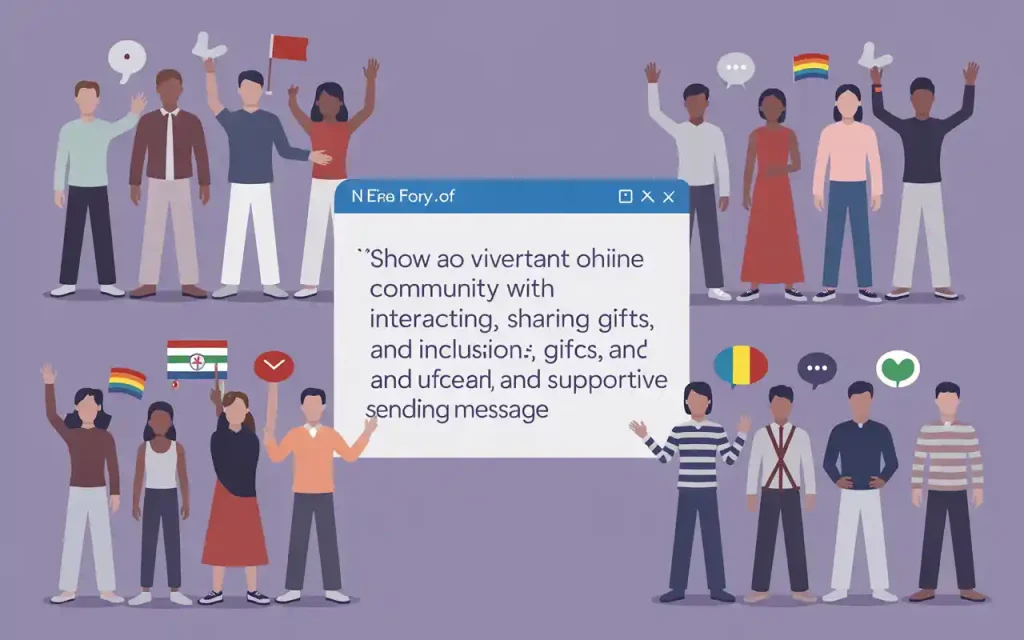
ASMR has developed a rich, supportive online culture.
- Intentionality and Intimacy: ASMR relaxation is driven by intentional, intimate interactions, often simulating real-life care and attention.
- Gift Exchange: Many ASMRtists and viewers engage in gift exchanges, such as donations or fan art, strengthening community bonds.
- Diversity and Inclusion: The community celebrates diversity, with creators and fans from all over the world.
- Stigma and Acceptance: While ASMR is widely accepted, some still misunderstand or stigmatize it, often confusing it with sexual content. Research shows most people use ASMR for sleep and relaxation, not for sexual pleasure.
Economic Impact
ASMR is not just a cultural phenomenon—it is also a significant economic force.
- YouTube Revenue: Top ASMRtists can earn between $2,500 and $35,000 per month from ad revenue alone, depending on views and engagement.
- Sponsorships and Merchandise: Many creators supplement their income with sponsorships, Patreon, and merchandise sales, often earning more from these sources than from ads.
- Barriers to Entry: New creators can find success by focusing on niche triggers and building a loyal audience, but it takes time and consistency.
- Global Market: ASMR is one of the most profitable YouTube niches, with companies paying high rates to advertise wellness and sleep products.
Technology and Innovation
ASMR is at the cutting edge of sensory entertainment.
- Binaural Audio: Many ASMRtists use binaural microphones to create immersive, 3D sound experiences.
- Virtual and Augmented Reality: VR and AR technologies allow users to explore interactive ASMR environments, enhancing immersion.
- AI Personalization: Machine learning algorithms can recommend personalized ASMR content based on user preferences and physiological responses.
- Haptic Feedback: Wearable devices and tactile transducers provide physical sensations that complement auditory and visual triggers, amplifying the ASMR effect.
Cross-Cultural Perspectives

ASMR is a universal experience, but cultural differences shape how it is expressed and enjoyed.
- Cultural Triggers: While whispering and tapping are common worldwide, some cultures use unique triggers like chanting, drumming, or traditional rituals.
- Healing Practices: In some societies, ASMR-like experiences are part of spiritual or healing traditions, emphasizing relaxation and emotional resonance.
- Global Community: Online platforms foster cross-cultural collaborations, allowing creators to share and blend different traditions and styles.
- Cultural Sensitivity: Creators must be mindful of cultural appropriation and strive to represent traditions respectfully.
ASMR: Controversies and Criticisms
- Sexual Misconceptions: Some people mistakenly believe ASMR is inherently sexual. While a small subset of content is erotic, research shows most viewers use ASMR for relaxation and sleep.
- Content Moderation: Platforms like YouTube monitor ASMR content, especially when minors are involved, to prevent inappropriate or exploitative material.
- Scientific Skepticism: Some scientists remain cautious, noting that more research is needed to fully understand ASMR’s mechanisms and effects.
- Cultural Appropriation: As ASMR grows globally, concerns about misrepresentation and insensitivity to cultural practices have emerged.
Simple Ways to Try It
You can easily add ASMR to your daily routine. Here’s how:
Step-by-Step Guide
- Search for “ASMR” on YouTube or TikTok.
- Try searching for specific triggers like “ASMR tapping” or “ASMR whispering.”
- Explore Different Types of Videos.
- Watch a variety of ASMRtists to find the style and triggers you like best.
- Use Headphones for the Best Experience.
- Headphones help you hear subtle sounds and feel the tingles more strongly.
- Watch Before Bed to Help You Relax and Sleep.
- Many people use ASMR as part of their bedtime routine.
- Try Creating Your Own ASMR.
- Experiment with making your own sounds or videos to see what works for you.
- Join the ASMR Community.
- Comment on videos, join forums, and share your experiences with others.
Quotes
- “ASMR is not just a trend—it is a powerful way to relax, reduce stress, and improve sleep for millions of people.”
- “The tingling sensation is often compared to a gentle ‘brain massage.’”
- “ASMR has exploded in popularity for several reasons: stress relief, better sleep, mood enhancement, and accessibility.”
- “Not everyone feels ASMR, but those who do often describe it as a unique and pleasant sensation.”
- “ASMR is a global movement that helps millions of people feel better every day.”
- “ASMR content is free and easy to find online, making it available to anyone with internet access.”
- “Personal attention triggers can make viewers feel cared for and less lonely.”
- “ASMR is at the cutting edge of sensory entertainment.”
- “Whether you are new to ASMR or a long-time fan, there is always something new to discover in this fascinating world.”
Highlighted Points
- ASMR stands for Autonomous Sensory Meridian Response and is known for its tingling, calming sensation.
- The sensation is triggered by specific sounds, visuals, or personal attention, such as whispering, tapping, or brushing.
- ASMR activates brain regions linked to relaxation, social bonding, and emotional arousal.
- Not everyone experiences ASMR, and sensitivity varies among individuals.
- The term “ASMR” was coined in 2010, but similar sensations have been described for decades and across cultures.
- ASMR’s popularity is driven by its effectiveness for stress relief, sleep improvement, mood enhancement, and the supportive online community.
- ASMR content has grown massively online, with millions of videos and billions of views globally.
- ASMR triggers include whispering, tapping, crinkling, personal attention, brushing, eating sounds, and more.
- ASMR is more than a trend; it is part of daily routines and self-care for many people worldwide.
- Mental health benefits include stress and anxiety reduction, improved sleep, better mood, and increased focus.
- ASMR has a strong, diverse, and supportive online culture, embracing intentionality, intimacy, and inclusion.
- The economic impact of ASMR is significant, with top creators earning substantial income from ads, sponsorships, and merchandise.
- Technological advances like binaural audio, VR, and AI are enhancing the ASMR experience.
- ASMR is enjoyed across cultures, with unique triggers and traditions in different parts of the world.
- Some misconceptions and criticisms exist, but research and community support continue to grow.
- Anyone can try ASMR easily by searching for videos online, using headphones, and exploring different triggers.
- ASMR is a safe, natural way to relax and improve well-being for millions of people.
Frequently Asked Questions

Q1. Is ASMR Safe?
Yes, ASMR is safe for most people. It is a natural response and does not cause harm. However, if certain sounds make you uncomfortable, you can skip those triggers.
Q2. Can Everyone Experience ASMR?
Not everyone feels ASMR. Some people are more sensitive to triggers, while others may not experience the tingling sensation at all.
Q3. Is There Scientific Proof That ASMR Works?
Research on ASMR is still growing, but early studies show it can lower heart rate, reduce stress, and improve mood for many people.
Q4. Can ASMR Help with Medical Conditions?
ASMR is not a replacement for medical treatment, but it can be a helpful tool for managing stress, anxiety, and sleep problems.
CONCLUSION
ASMR is a powerful tool for relaxation, stress relief, and well-being. It is more than just a trend—it is a global movement that helps millions of people feel better every day. Whether you are new to ASMR or a long-time fan, there is always something new to discover in this fascinating world.




